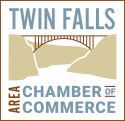Beyond the Handshake: Building Lasting Customer Confidence in a Low-Trust Economy
A Local Economy Built on Trust — and Adaptability
Across Southern Idaho, small businesses are the heartbeat of community commerce. But trust — once built through a handshake — now requires new tools, transparency, and digital resilience. In an era where skepticism runs high, future-proofing your business means showing customers not just what you do, but why they can believe you.
To thrive in a low-trust economy:
-
Strengthen customer relationships with consistent, personal communication.
-
Be radically transparent — about pricing, sourcing, and service standards.
-
Embrace adaptable systems (from digital contracts to clear feedback loops).
-
Prioritize integrity over image; reputation now spreads at AI speed.
How Trust Became the New Currency
Over 80% of consumers now research a business online before spending a dollar. They look for social proof, verified reviews, and transparent policies — not just advertising. Small businesses that open their operations, pricing, and commitments to scrutiny build stronger customer bonds and outlast uncertainty.
In Twin Falls and beyond, that might look like:
-
Posting behind-the-scenes videos showing how your product is made.
-
Offering transparent refund policies.
-
Using community feedback to adjust operations publicly.
For context, check resources like HubSpot’s Customer Trust Report and SBA Learning Center.
5 Trust-Strengthening Moves That Pay Off
|
Action |
Why It Works |
Local Example |
|
Publicly respond to reviews |
Shows accountability |
Twin Beans Coffee replying to customer suggestions online |
|
Share sourcing or process info |
Adds credibility |
A bakery listing local farm suppliers |
|
Simplify contracts |
Reduces confusion |
Home service companies using plain-language terms |
|
Partner with nonprofits |
Demonstrates shared values |
A realtor sponsoring youth sports |
|
Adopt verified digital tools |
Signals professionalism |
Businesses using secure e-signatures for transparency |
Checklist: Building a Transparent Business Foundation
?
Adapting to Changing Customer Expectations
Modern customers expect immediacy, clarity, and digital convenience. Businesses that resist digital transformation risk appearing out of step — or worse, untrustworthy.
Start small:
-
Use Google Business Profile to keep hours and contact info updated.
-
Add scheduling links from tools like Calendly or Square Appointments.
-
Encourage feedback via surveys using Typeform or SurveyMonkey.
When customers see that their voice shapes your operations, they develop loyalty that lasts longer than any promotion.
FAQ: Common Trust Challenges for Local Businesses
Q: How can I rebuild trust after a mistake?
A: Acknowledge the error quickly, explain what you’ve changed, and invite public feedback. Transparency turns errors into evidence of integrity.
Q: Should I publish negative reviews?
A: Yes — honest feedback signals authenticity. Respond constructively and show how you improved.
Q: Is “going digital” really necessary for small-town businesses?
A: Absolutely. Digital tools don’t replace relationships — they amplify them by removing friction and demonstrating reliability.
When Digital Tools Build Trust the Right Way
Modern trust often starts with security. When small businesses use secure digital contract-signing platforms, they demonstrate professionalism and accountability. These systems verify identities, ensure authenticity, and protect both the business and the client. For businesses in service, real estate, or consulting, this can eliminate confusion and strengthen client confidence. To explore how these systems ensure authenticity and legal protection, take a look at this.
Spotlight: Practical Product to Explore
Consider tools like FreshBooks — not for flashy marketing, but for what it represents: organized transparency. Invoicing, expense tracking, and payment reminders all live in one place, reducing misunderstandings and reinforcing trust with clients who value clarity.
Takeaways for Chamber Members
-
Relationships drive retention; transparency drives acquisition.
-
Digital credibility is as vital as personal reputation.
-
Customers trust what they can verify — so make it easy to verify you.
In a trust-deficient economy, small businesses win not by being the loudest — but by being the most consistent. When you communicate clearly, show your values, and document your promises, you’re not just protecting your business; you’re building the foundation for the next generation of local loyalty.

